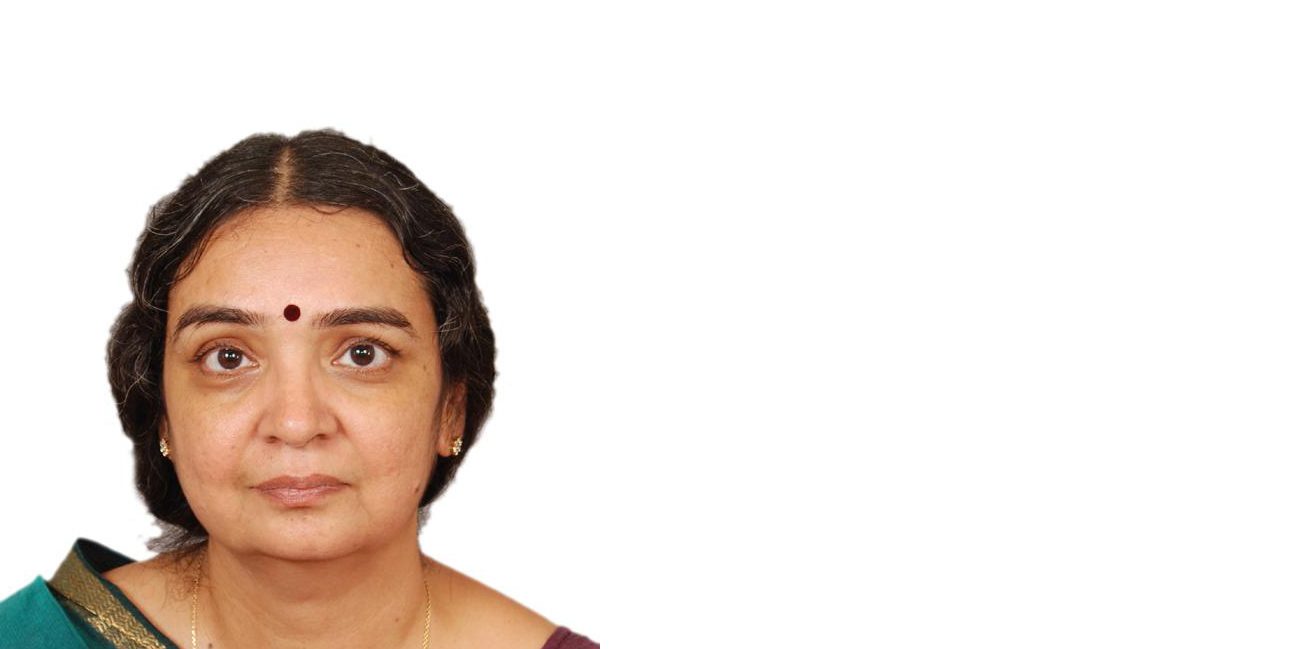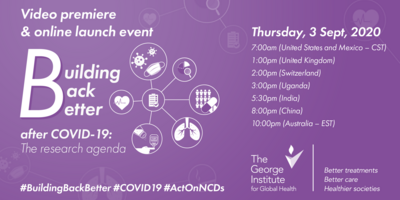
Meet Rajani Ved, Distinguished Fellow, The George Institute for Global Health
Rajani Ved is a medical doctor with public health training and is also the Executive Director, National Health Systems Resource Centre in New Delhi, India.
Your career spans more than three decades. Can you give us a snapshot?
The early part of my career was spent providing community-level clinical care both to Self Help Groups of women and providing services to the general community. I worked with NGOs, international agencies, including donor agencies, and government. For nearly a decade now, I have been working with the National Health Systems Resource Centre (NHSRC), established by the Ministry of Health and Family Welfare, where my role has been to work with state- and district-level health systems and strengthen implementation through program reviews, capacity building, and mentoring and enabling responsive policy adaptation and formulation.
I’ve been fortunate that for quite a lot of my career, I have worked extensively with NGOs and therefore directly with communities. This, I believe, has stood me in good stead in what I do now, because I try to bring a people-centred approach to what I do. The last few years have been much more at a policy level, but there are enough opportunities here that enable me to link ground reality with policy change.
You have worked in many areas of primary healthcare. Are there any projects that stand out to you?
Around 15 years ago, through a MacArthur Fellowship, I received a grant to test delivering a package of reproductive health-related knowledge and skills to women organised in groups as part of micro-credit programs. The women were more interested in micro-credit and employment generation than hearing about messages/content around reproductive health. So I had to design an intervention that was acceptable to the women and the very limited time that they had for themselves. In the span of a year, from spending an hour a week with them, I managed to get about 15 women’s Self Help Group leaders to spend two days every month with my team and I in a residential camp, talking about their day to day lives and how health impacted themselves, their families, and livelihoods. I understood that unless we were able to deliver health messages to them in ways that enabled action in their lived reality, most of this knowledge was superfluous.
It was also here that I understood how information was enabling – particularly how information on health entitlements, based on a good understanding of services and rights, could be effectively converted into demanding accountability from the health system. This was the case for the women who were already empowered as a result of being part of the Self Help Groups. I think my best moment was when one of the women who I had worked with demanded that a gynecologist in a district hospital actually examine her more thoroughly in a way that used some of the technical language we’d covered.
You know, when we talk so much about health promotion and putting health in people's hands, we don't really look at their everyday lives. I think these women gave me the grounding to understand how health systems should approach women’s health and this laid the foundation for my work with community health workers, which is the other thing I’m really passionate about. My time in NHSRC has taught me much about how to grow such programs through capacity building, onsite mentoring and just, and rightful payment mechanisms. I like to think these two experiences would rank as my most valuable learning and perhaps my most significant contributions.
How transferable are community health worker programs, known as ASHAs, to other low- and middle-income countries?
I certainly think they are transferable because almost all the situations in India would be applicable to other low- and middle-income countries. In India, we have implemented ASHA training at scale, systematically developed guidelines and standards, devised certification programs, created incentive systems, supportive and supervisory mechanisms, and enabled integration into health systems, creating the institutional mechanisms to run community health worker program at scale, and I think those are very relevant to other countries.
What are some of the challenges in scaling up community programs?
I will give you an example of an NGO pilot in Western India for a home-based newborn care intervention involving community health workers who were trained in home-based newborns, including asphyxia management, sepsis management, provision of injectable antibiotics, and of course a host of other home care behaviours. This was approved by the Government for inclusion into ASHA training, given our high newborn mortality rate in 2011.
It was a fairly intensive program and we realised it required a lot of hand-holding support of the workers and supervision. Some of our ASHAs were low-literate or non-literate so we needed to make sure that their training was of very high quality and focused more on skill than on didactic knowledge. We also had to provide a regular medicine kit, as well as ensuring their credibility, both in terms of knowledge and skills and also in terms of connection with the larger system and structures. I think that was essential for the community to be accepting of them in taking care of their newborn babies.
I can by no means say that we achieved the results of the small-scale project because in large-scale implementation, particularly of models that are process-intensive and complex, quality and supervision tend to be compromised. To overcome some of these challenges we made several adaptations - splitting training into modules so that trainers met more often with ASHAs, providing them with some handholding, reducing the components of the intervention, building a supervisory cadre, linking newborn care to a monetary incentive, etc. I would say that just under half the ASHAs are now contributing to newborn care, but this needs to be viewed from the perspective of scale.
What role does digital technology play in improving primary healthcare in India?
There is a lot of emphasis on the use of digital technology from policy makers as in India we are moving from selective healthcare to comprehensive care. There are several potential uses. The first and most basic is population numeration, and empanelment – or understanding where people live in proximity to Health and Wellness Centers, which provide the first level of care. Other uses of digital applications include recording patient data, use in population analytics, reporting on prevalence and control, especially for chronic diseases, use in decision support systems, telemedicine/teleconsultation, etc.
Of course, part of this is providing ASHAs with smartphones so that they have the population data in their phones linked to the facility level, and then to primary health centre records. We are moving in that direction but internet connectivity is a problem in about 20 to 25 percent of the country. Also, ASHA workers are dealing with complex chronic diseases now and they need to be much more highly skilled, have much more hands-on training and have higher literacy levels. In areas where they have been trained to use smartphones, they have adapted remarkably but here one is talking about ASHAs who already have higher literacy levels.
In this fellowship you want to focus on women’s health, can you tell us more about the focus of your work?
For my fellowship I’d like to focus on non-communicable diseases among women, particularly related to their understanding of and access to care, and increasing provider sensitivity to women’s health issues.
Most of my work has been in an environment where we have implemented selective primary healthcare, especially for women, limited to pregnancy and delivery. Access to care for NCDs amongst poor women is a challenge, because women from lower-ranked socioeconomic classes in India have much less access to healthcare than their counterparts who are richer, belong to the upper class and who live in urban areas. Poverty and lack of access affects every part of their life, not just maternal health. My concern is that we don’t have much experience dealing with women with chronic diseases, much less among poor women in rural and urban areas. We hardly know anything about their risk of stroke, cardiovascular disease, kidney disease etc. There is a real lack of information and research in this area.
We need to use some of those lessons that we have already learned about accessing marginalised and vulnerable women and transfer the learning to implementing a chronic disease program. Finally, I have a new found interest in the challenge of mulitsectorality. Care for chronic diseases will have to involve all sectors, it's not just the health system alone. It’s about improving sanitation, nutrition, livelihoods, and other areas that pose challenges to the health of women. It’s far more complex than anything that we have dealt with in the past and we don't have either the institutional structure or the program experience. These are the areas I am interested in working on during the fellowship.


